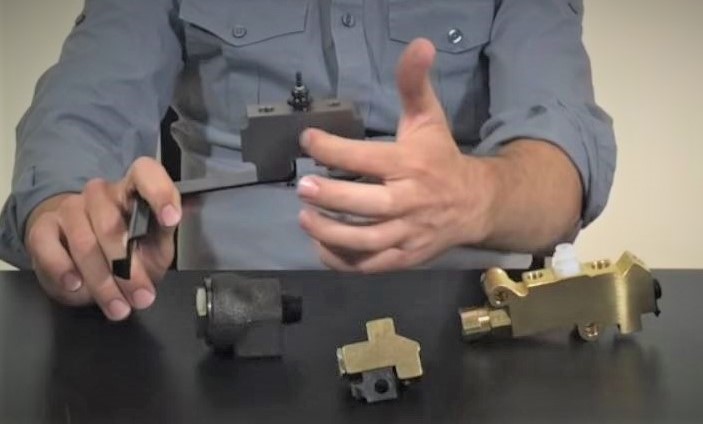As hydraulic brake system designs evolved in the postwar era, so have the parts within them—with specific regard to the valves use to control the system’s hydraulic pressure.
You can read more about automobile hydraulic brake system evolution here: What’s the Difference Between Single- & Dual-Circuit Brake Systems?
And that’s particularly evident as vehicles moved from drum/drum to drum/disc, and now disc/disc brake setups. Over the decades, vehicle brake systems adopted components like metering blocks, distribution blocks, proportioning valves, and combination valves to help regulate the hydraulic pressure within each system.

So the brake experts over at The Stop Shop made this quick video that’ll walk you through each of those parts, explain why (and when) they were used, and where you’ll commonly find them in your vehicle’s braking system. Then the video talks briefly about an adjustable setup, which could come in really handy for performance/race applications and for those of you building a custom brake system.
It’s only about four minutes long and does a great job of explaining the key differences between each of those brake system parts, check it out:

I’m considering putting rear disc on my 73 camaro and have learned there is a residual valve in combination valve going to rear brakes that must be removed or the rear calipers could hang up. Do you have any info about this?
I’m converting my rear brakes to disc on my C1500 pick up.do I have to get another portioning valve or can I use the one that’s in there just by removing the residual valve ur help will be appreciated.
Yes, you will likely need to replace the prop valve. Click here to contact the Summit Racing tech folks. They’ll ask you some more specifics of your brake setup and will be able to recommend some things to help finish your brake conversion.
On my ’67 Buick with front disc brakes, the rectangular shape Kelsey Hayes metering valve (that’s how they called it in the service manual) looks like the proportioning valve you’re showing. In 1968, it was replaced by the round one you refer to as a metering valve, mounted in the exact same location at the right of the master cylinder. The 1969 models changed the style of their valves again (still in the same location) but I don’t have the service manual for that one. Still a round shape but different. The 1968 service manual also refers to it as a metering valve.